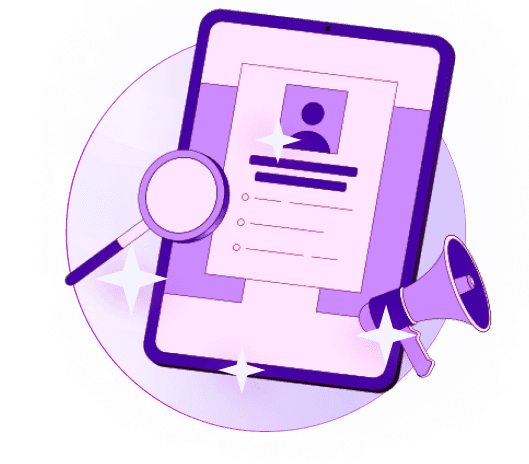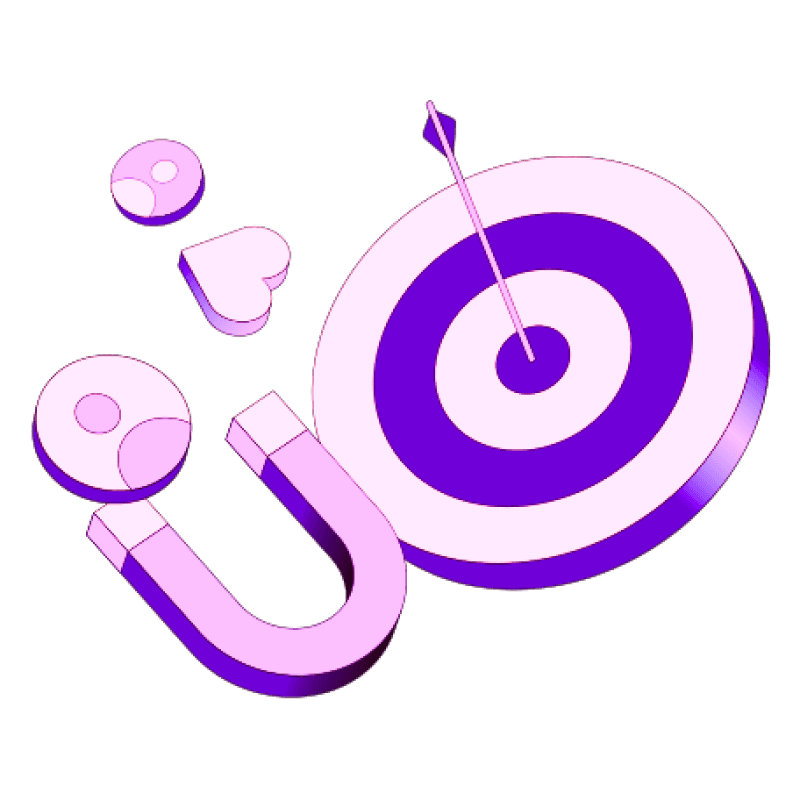Blogs
Articles

AI SDR vs AI BDRs vs AI Sales Reps: Top Difference In 2025
The rise of AI SDR vs AI BDRs vs AI Sales Reps has reshaped how sales teams work throughout the funnel. Sales teams that used AI 83% of sales teams using AI in the last year achieved higher revenue growth than those who didn't - 83% versus 66%. Traditional sales roles remain valuable, but AI-powered alternatives have created remarkable efficiency at every stage of the customer experience.
Modern sales strategies need a clear understanding of SDR vs BDR roles in their AI form. AI SDRs shine at top-of-funnel lead generation. They automate cold outreach and track essential metrics effectively. AI BDRs take a different approach by nurturing relationships and using predictive analytics to spot promising opportunities. AI sales reps handle customer questions and manage follow-ups skillfully.
This piece breaks down the distinct characteristics of these AI sales roles. You'll learn where each fits in your sales pipeline and how they can boost your revenue generation in 2025 and beyond.
AI SDRs vs AI BDRs vs AI sales reps
The sales world has changed dramatically. Specialized AI agents now handle different parts of the sales funnel. A clear understanding of these AI sales roles helps companies use them well.
What is an AI SDR?
An AI SDR (Sales Development Representative) automates early-stage activities like lead qualification and outreach. These virtual agents take care of time-consuming tasks that don't scale well with human effort. AI SDRs work around the clock, making sure every lead gets attention whatever time they come in. They use machine learning and natural language processing to understand customer intent, qualify leads, and book meetings for human sales teams. The AI SDR figures out if prospects are ready to buy by looking at their responses and how they interact. This helps them send custom emails and follow-ups based on CRM data.
What is an AI BDR?
An AI BDR (Business Development Representative) works as the sales team's scout to find leads and make first contact. These smart agents handle market research, prospecting, outreach, and lead qualification with remarkable consistency. AI BDRs process huge amounts of data to spot potential customers based on demographics, online behavior, and past interactions. This technology boosts lead conversion rates and speeds up sales cycles. On top of that, it can tailor outreach efforts to each prospect's unique traits, which helps build stronger connections.
What is an AI sales rep?
AI sales representatives work at the deal-closing end by turning qualified leads into customers. These smart tools handle routine work like sending personalized emails, setting up calls, and updating contact info while highlighting valuable opportunities. Unlike other AI sales roles, autonomous AI sales reps can handle entire customer conversations on their own through data analytics, machine learning, and natural language processing. They qualify leads automatically so human teams can focus on promising buyers.
Key AI SDR, AI BDR, and AI sales rep differences

The main difference between AI SDR vs AI BDRs vs AI Sales Reps lies in their sales funnel positioning. Each AI agent excels at specific stages of the customer experience and uses distinct technologies. Their performance metrics also vary accordingly.
Top of Funnel: AI SDRs and cold outreach
AI SDRs manage lead generation and first contact at the start of the sales process. These automated agents use machine learning and natural language processing to handle personalized outreach at scale. Human SDRs can only work during business hours, but AI SDRs work round the clock and respond to inbound leads instantly. They excel at analyzing customer data and qualify prospects based on engagement signals. The system automates routine follow-ups efficiently. AI-powered smart chatbots interact with website visitors 24/7 and capture leads outside regular hours. Lead generation numbers, response rates, and scheduled demos measure their success.
Middle of Funnel: AI BDRs and nurturing
AI BDRs own the middle funnel space where they nurture relationships and qualify prospects. These agents use predictive analytics with CRM integration to spot new opportunities. They analyze vast datasets from social media and customer management systems. The system tracks activities like social media posts or company updates and reaches out when relevant changes occur. AI BDRs excel at personalizing interactions based on buyer behavior patterns. Their success metrics include lead qualification rate, engagement metrics, and lead-to-demo conversion rates.
Bottom of Funnel: AI Sales Reps and conversion
AI sales reps drive revenue by converting nurtured leads into customers. They use conversational AI and sentiment analysis for complex interactions and handle objections smoothly. The system guides prospects through their final decisions. These advanced tools analyze previous negotiations and suggest optimal pricing strategies with personalized closing tactics. AI sales reps' strength lies in analyzing conversion data to spot key factors that influence buying decisions.
Sales Funnel Positioning and Responsibilities
AI-powered sales tools are changing traditional roles and creating new ways to streamline processes throughout the customer's trip. Smart systems now automate lead qualification, follow-up, and parts of closing processes without losing the human touch. Old and slow sales funnels are becoming obsolete.
Sales funnels today face many challenges. Generic outreach fails to make personal connections. Manual follow-ups let leads slip away. Sales and marketing teams don't line up well, which creates frustration. AI fixes these problems by making each step more targeted and effective.
AI improves human sales expertise rather than replacing it. AI SDRs save time on prospecting and qualification, which lets human representatives build better relationships. These autonomous agents handle early-stage activities. They qualify leads, send customized messages, and schedule meetings without human help.
AI BDRs then take charge of middle-stage activities and develop opportunities through data-enriched involvement. They study big datasets to spot patterns and focus on leads most likely to convert. The automated segmentation and follow-up timing ensures prospects get messages at the perfect time.
AI Sales Representatives focus on converting qualified leads through analytical insights and conversational intelligence at the final stages. In spite of that, negotiation and contract finalization still need human interaction and trust-building.
Technology Stack and AI Capabilities
Each AI sales role stands on different technical foundations that match their specific functions in the buyer's experience. These roles need specialized technologies to excel at their particular stage of the sales process.
AI SDRs: NLP and ML for personalized outreach
AI SDRs work with natural language processing (NLP) and machine learning algorithms to handle outreach tasks automatically. These systems analyze customer intent through NLP and qualify leads while scheduling meetings for human sales teams. AI SDRs tap into more than 50 data sources—including hiring trends, tech adoption, and social signals—to create personalized communications. They go beyond simple templating by generating custom messages based on context. The system adjusts subject lines and value propositions that match each prospect's situation. AI SDRs work round the clock and respond to leads across time zones and business hours.
AI BDRs: Predictive analytics and CRM integration
AI BDRs mainly use predictive analytics integrated with CRM systems to guide prospects through the middle funnel. Research shows that companies using predictive analytics tools have grown by 37%. These systems excel at spotting patterns in customer data to predict behavior and improve sales strategies. Companies that use predictive analytics for lead scoring see a 16% boost in sales conversions. This technology creates highly targeted marketing campaigns that cut customer churn by up to 20%. Modern CRM platforms come with built-in predictive features that study end-to-end sales data and offer practical suggestions.
AI Sales Reps: Conversational AI and sentiment analysis
AI sales representatives rely on conversational AI and sentiment analysis to close deals. These systems run on advanced machine learning models that read emotional signals during sales calls. AI sales reps can study word choice, tone, pacing, and subtle hints like negation to understand a prospect's emotional state during conversations. The system learns from past sales interactions, which helps teams adapt to market changes while staying ahead of competition. Ready to see how AI can boost your sales? Check out Persana.ai for advanced AI sales solutions that fit your business needs.
Performance Metrics and Business Impact
Sales teams need specific performance metrics to measure how AI affects their sales funnel. The right KPIs help teams measure their return on investment. These metrics also help optimize AI deployment throughout the customer's buying process.
AI SDR KPIs: Leads generated, response rate, demo bookings
AI SDRs at the top of the funnel are measured by their lead generation metrics. Email response rates tell us how well they're doing. The best AI SDRs know how to optimize timing, personalization, and subject lines to boost engagement. Another key metric shows how many marketing-qualified leads (MQLs) become sales-qualified leads (SQLs). Pipeline velocity helps spot bottlenecks by tracking how fast leads move through early stages. Cost comparisons reveal AI SDRs can be up to 10 times cheaper than humans while delivering similar results. Teams using AI for prospecting book substantially more monthly meetings.
AI BDR KPIs: Engagement rate, lead-to-demo conversion
AI BDRs in the middle funnel build relationships, and their metrics focus on engagement quality. Lead-to-opportunity conversion rates show how well an AI BDR spots promising prospects. Top performers in SaaS companies achieve up to 12% conversion. Pipeline contribution is a vital metric - AI BDRs typically generate between 46% and 73% of total pipeline. High-performing AI BDRs can create between $191,000 and $700,000 in monthly pipeline value based on average contract value. Email open rates, click-through rates, and response rates show how well an AI BDR builds relationships.
AI Sales Rep KPIs: Close rate, sales cycle length, revenue impact
Revenue metrics matter most for AI sales representatives at the bottom of the funnel. Close rates show customer conversion success, with AI boosting win rates by up to 50%. Teams that use AI sales tools effectively cut their sales cycle by 20-30%. Annual contract value (ACV) and customer lifetime value (CLV) reveal the long-term revenue effects. Sales productivity jumps by about 30% when teams use AI. Sellers spend more time actually selling - from 21% to 50% of their workday. Persana has tools to track and optimize your AI sales performance across your entire funnel.
Conclusion
The roles of AI SDRs, AI BDRs, and AI Sales Reps each play a unique part in the sales funnel. These AI roles serve specific purposes. AI SDRs shine at top-of-funnel lead generation. AI BDRs build relationships in the middle funnel. AI Sales Reps close deals at the bottom of the funnel.
Each role's tech stack makes them unique. AI SDRs use natural language processing for customized outreach. AI BDRs' lead nurturing relies on predictive analytics and CRM integration. AI Sales Reps direct complex closing conversations through conversational AI and sentiment analysis.
Smart companies will deploy these specialized AI agents throughout their sales funnel. Persana.ai provides innovative solutions to help you set up these AI sales roles. You retain control of the human element that builds customer relationships.

Create Your Free Persana Account Today
Join 5000+ GTM leaders who are using Persana for their outbound needs.
How Persana increases your sales results
One of the most effective ways to ensure sales cycle consistency is by using AI-driven automation. A solution like Persana, and its AI SDR - Nia, helps you streamline significant parts of your sales process, including prospecting, outreach personalization, and follow-up.



